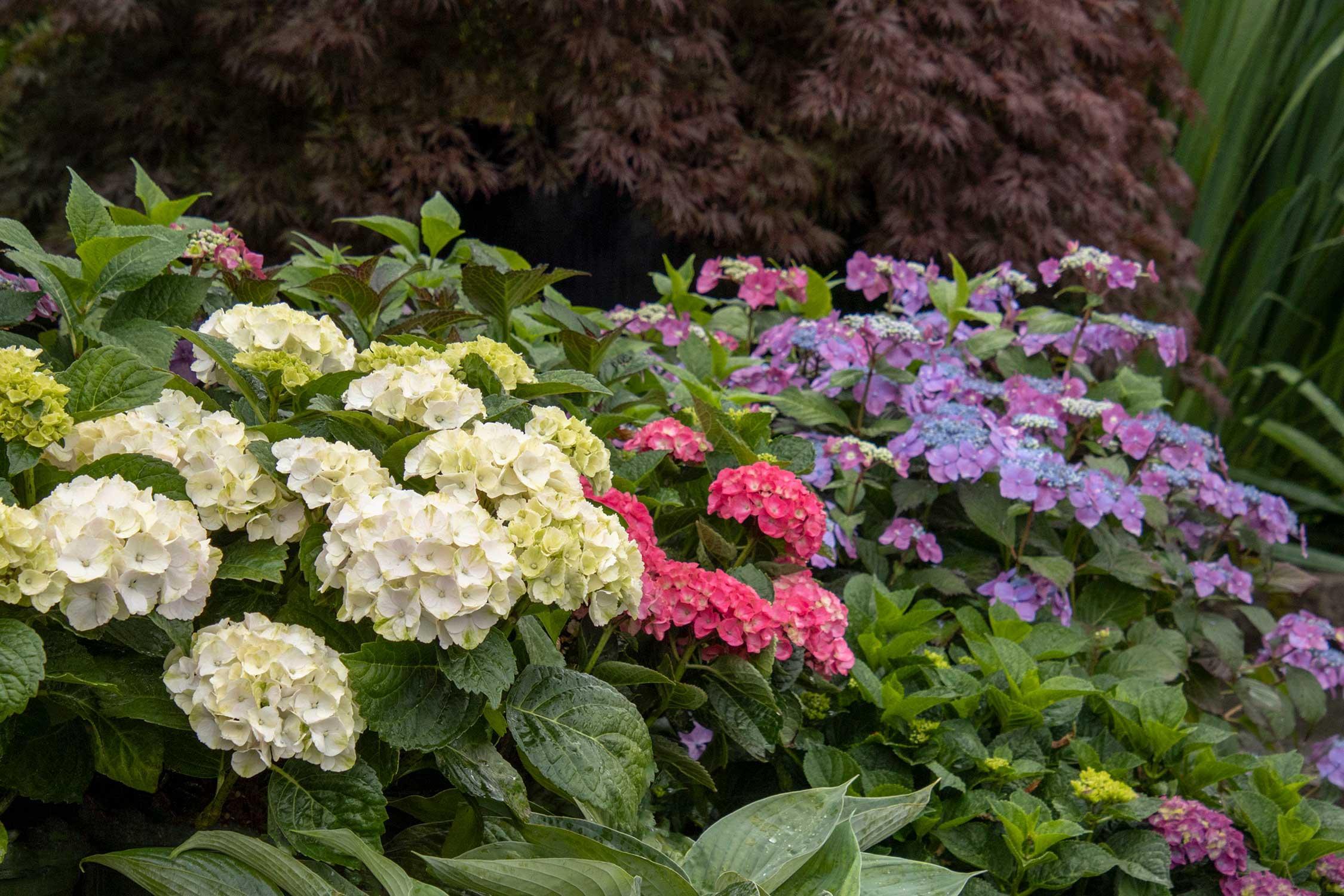Spring Into Hydrangea Blooms
Spring into Hydrangea Blooms
Hydrangeas are some of the most popular flowering shrubs in the world, and for good reason. They come in a wide variety of colors, sizes, and shapes, and they can add a touch of beauty to any garden. If you're lucky enough to have hydrangeas in your yard, now is the time to start thinking about spring care.
Here are a few tips to help your hydrangeas bloom their best this spring:
- Prune properly. The best time to prune hydrangeas is in the spring, just as new growth begins to emerge. If you're not sure how to prune your hydrangeas, consult a gardening expert or check out some online resources.
- Fertilize regularly. Hydrangeas need regular fertilization to produce their best blooms. A balanced fertilizer, such as 10-10-10, can be applied in the spring and fall.
- Water deeply and regularly. Hydrangeas need moist soil to thrive. Water your hydrangeas deeply once a week, or more often during hot, dry weather.
- Add mulch. Mulch around your hydrangeas to help retain moisture and suppress weeds. A layer of 2-3 inches of mulch is ideal.
- Protect from pests and diseases. Hydrangeas are susceptible to a few pests and diseases, such as aphids, spider mites, and powdery mildew. If you see any signs of pests or diseases, treat them promptly.
With proper care, your hydrangeas should bloom beautifully all summer long.
Here are some additional tips for spring hydrangea care:
- Check the soil pH. The color of hydrangea blooms is affected by the soil pH. If you want blue blooms, your soil should be acidic (pH of 5.5 to 6.5). If you want pink blooms, your soil should be alkaline (pH of 6.5 to 7.5). You can test the soil pH with a kit from your local garden center.
- Add lime to alkaline soil. If your soil is alkaline, you can add lime to lower the pH. Do this in the fall, so that the lime has time to work before spring.
- Add sulfur to acidic soil. If your soil is acidic, you can add sulfur to raise the pH. Do this in the spring, so that the sulfur has time to work before the hydrangeas bloom.
- Water with rainwater or distilled water. If your tap water is hard, it can make the soil alkaline and cause the hydrangea blooms to turn pink. If possible, water your hydrangeas with rainwater or distilled water.
- Deadhead spent blooms. Deadheading spent blooms will encourage the hydrangeas to produce more blooms. Simply remove the spent blooms by cutting them off at the base of the stem.
- Protect from winter damage. If you live in an area with cold winters, you may need to protect your hydrangeas from frost. You can do this by covering them with a burlap sack or other protective material.
By following these tips, you can help your hydrangeas bloom beautifully all summer long.
Hydrangeas are beautiful flowering shrubs that can add a touch of elegance to any garden. If you're thinking about planting hydrangeas in the spring, there are a few things you need to know.
First, hydrangeas prefer moist, well-drained soil and dappled shade. They should not be planted in full sun, as this can scorch their leaves.
Second, the best time to plant hydrangeas is in the spring, after the last frost. This gives the plants time to establish their roots before the hot summer weather arrives.
Third, when planting hydrangeas, it's important to dig a hole that is twice as wide as the root ball. The plant should be placed in the hole so that the top of the root ball is level with the surrounding soil.
Finally, after planting, water the hydrangeas deeply and regularly. They will need about an inch of water per week, more during hot, dry weather.
For more information about planting hydrangeas in spring, please visit . This website has a wealth of information on hydrangea care, including planting, watering, fertilizing, and pruning.
FAQ of planting hydrangeas in spring
Here are the 5 most frequently asked questions about planting hydrangeas in spring, along with valuable insights and solutions:
- When is the best time to plant hydrangeas in spring?
Hydrangeas are typically planted in the spring, when the soil has warmed up and the danger of frost has passed. However, you can also plant them in the fall, as long as the soil is still workable.
- What type of soil do hydrangeas need?
Hydrangeas prefer moist, well-drained soil that is rich in organic matter. The soil pH should be slightly acidic, between 5.5 and 6.5. If your soil is alkaline, you can add peat moss or sulfur to acidify it.
- How much sun do hydrangeas need?
The amount of sun that hydrangeas need depends on the variety. Some varieties, such as bigleaf hydrangeas, prefer partial shade, while others, such as mountain hydrangeas, can tolerate full sun.
- How deep should I plant hydrangeas?
Hydrangeas should be planted at the same depth as they were growing in the nursery. If you plant them too deeply, they may not thrive.
- How much water do hydrangeas need?
Hydrangeas need regular watering, especially during the first year after planting. Water them deeply once a week, or more often if the weather is hot and dry.
Image of planting hydrangeas in spring
5 different images of planting hydrangeas in spring from Pinterest:
- Image 1: A person digging a hole in the ground to plant a hydrangea. The soil is loose and crumbly, and the person is using a garden trowel to dig.

- Image 2: A person placing a hydrangea in the hole they just dug. The hydrangea is in a pot, and the person is carefully removing it from the pot.

- Image 3: A person backfilling the hole around the hydrangea. They are using their hands to pack the soil down around the roots.

- Image 4: A person watering a newly planted hydrangea. They are using a watering can to pour water over the soil.

- Image 5: A hydrangea that has been planted in spring. The hydrangea is in full bloom, and the flowers are a beautiful shade of blue.

Post a Comment for "Spring Into Hydrangea Blooms"